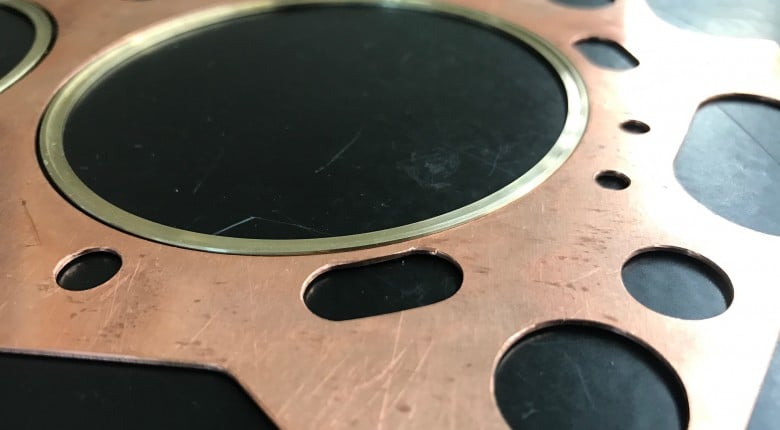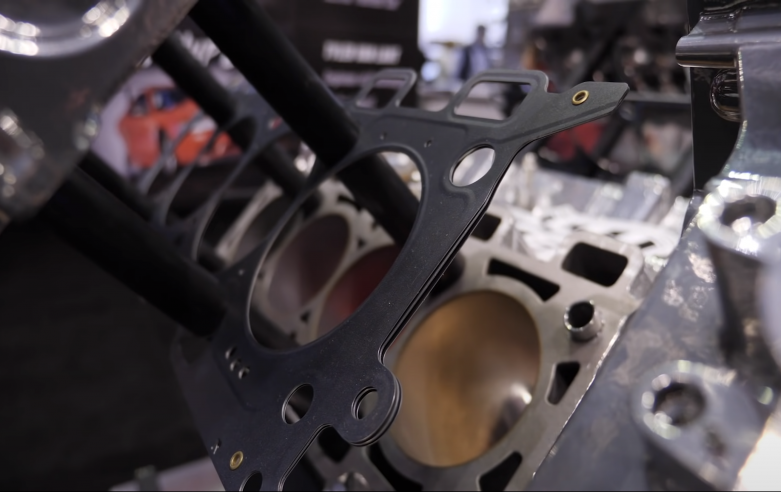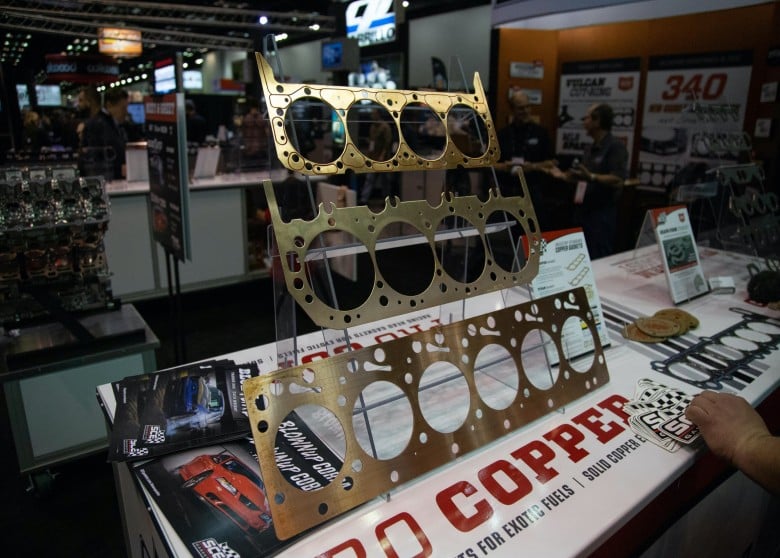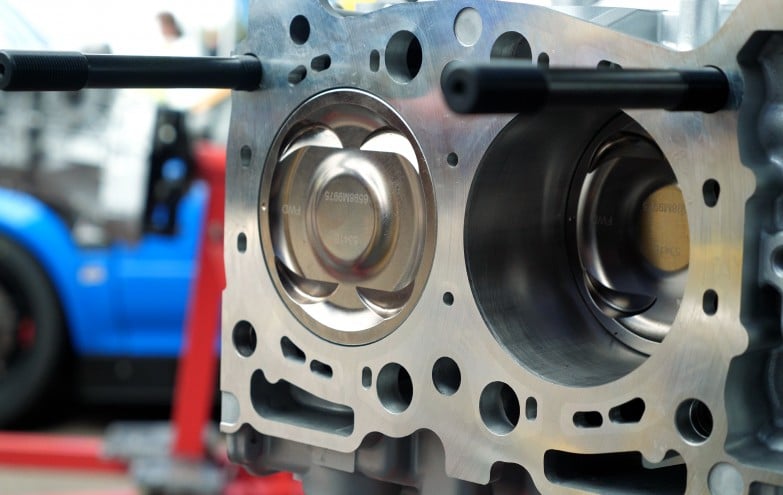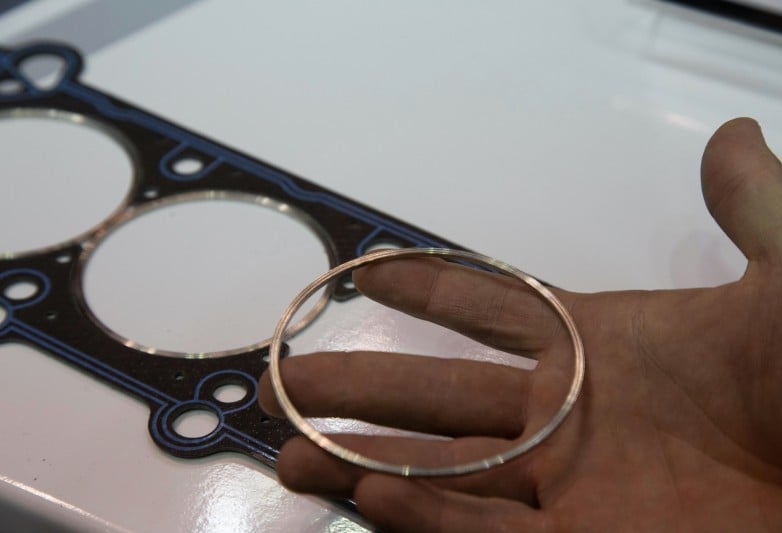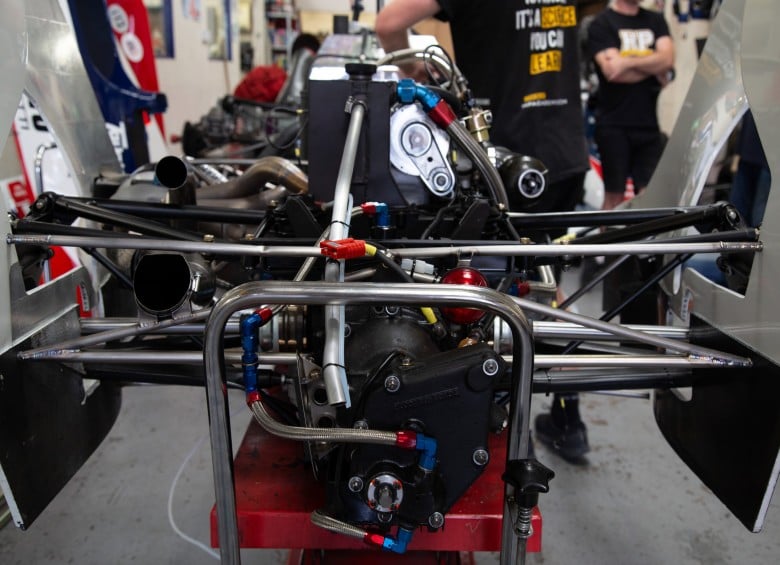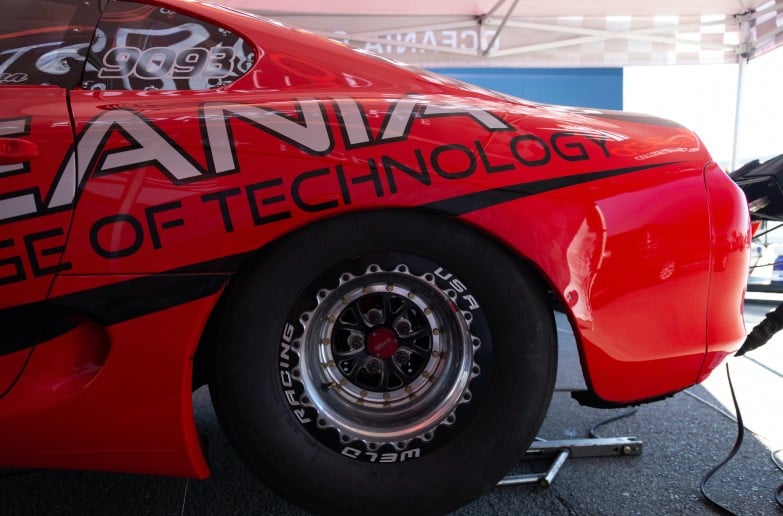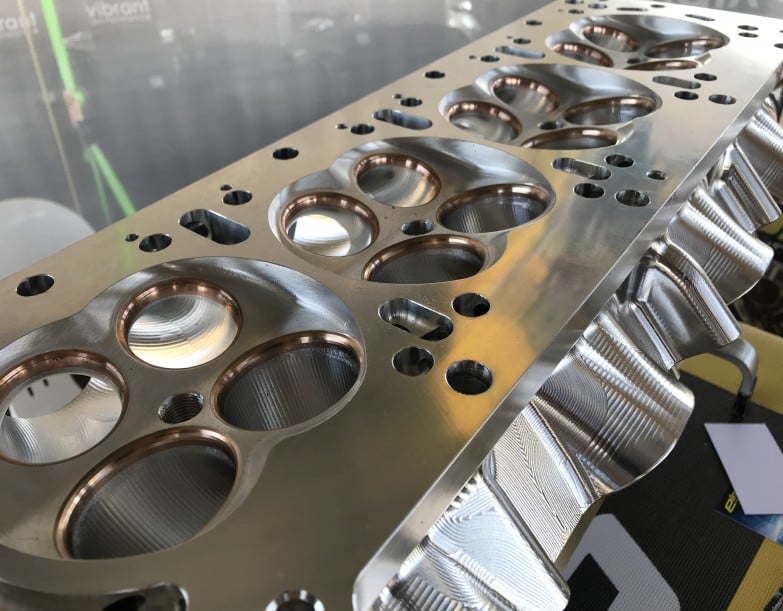Cylinder head sealing is something that on a standard engine with stock componentry, is not a big issue. When specific power levels are increased, however, this is another story entirely, with cylinder head sealing becoming a limiting factor to how much boost pressure and hence power your engine can produce. In this article, you will read about the common head gasket options, studs and o-rings to help you make an informed decision on your cylinder head sealing technique.
In this article: What Happens When Your Gasket Fails? | OE Composite Gasket | MLS Gasket | Copper Gaskets | Head Studs | Use of O-Rings with an MLS Gasket | Gas Filled O-Rings | W-Ring | Aluminium Bronze Sealing O-Rings | Engine Block and Cylinder Head Construction | Monitoring Head Gasket Seal | Conclusion
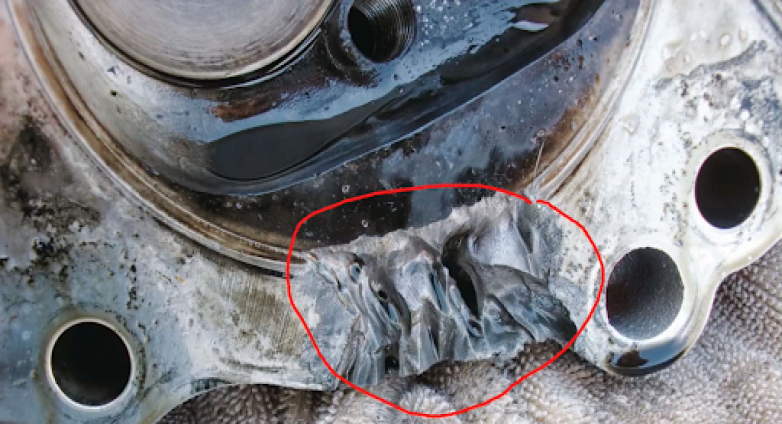
What Happens When Your Head Gasket Fails?
It only takes a few thousandths of an inch of flex in the cylinder head or block, caused by high boost and high power, for the gasket to leak and cause combustion pressure to escape from the combustion chamber which will generally then make its way into the cooling system. When this happens, the cooling system can’t handle the increased pressure, the bypass in the radiator cap opens and the coolant is pushed out into the overflow. If this happens over an extended period of time, you can, of course, end up with your engine overheating and in extreme cases, significant damage to the engine block and head can be sustained such as that shown above. It doesn’t even take a big leak for a long period of time to cause this type of damage, in fact, it is quite common, particularly on high boost methanol engines.
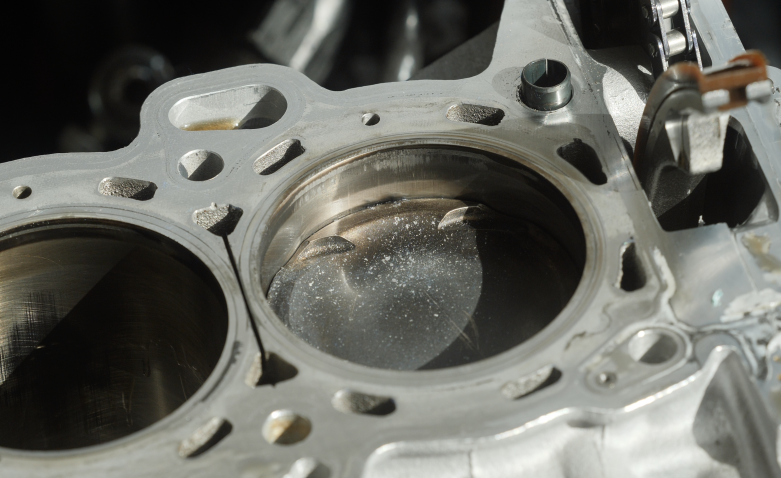
Head gasket failures are so common that some engine builders build in an allowance for this possibility. In the early F1 turbo era and in a number of the Group A turbo cars running in touring car championships in the late ‘80s to early ‘90s, grooves were machined into the deck surface of the engine block to create a path through which combustion pressure could escape that didn’t lead to the cooling system.
In order to stop combustion pressure leaking out of the combustion chamber, the gasket or whichever sealing medium you use needs to expand and account for any flexing between the cylinder head and block surfaces. Let’s look at the various options that are available to you.

OE Composite Gasket
This gasket consists of a composite metal sheet which generally has a fire ring that locates around the combustion chamber to improve the sealing of combustion gases as well sealing the coolant passages, oil galleries and oil return paths between the cylinder head and the block. These do compress and seal reasonably well, especially to imperfect surfaces, but have very limited strength and as such are only suitable in lower power applications, even most OE manufacturers have now moved to an MLS style gasket in their performance engines. So in short, if you have one of these, throw it in the bin and seek out a superior solution!
MLS Gasket
MLS gaskets, standing for multi layer steel, unsurprisingly consist of multiple layers of stainless steel, sometimes with a special coating to improve their sealing ability such as nitrile rubber or an elastomer. Depending on the gasket, there will be anywhere from two to about seven layers which are riveted to a central metal core. These multiple layers are designed to have a spring like effect which allows them to take up the space created by the cylinder head flexing away from the block. Unlike OE composite gaskets, MLS gaskets require precise surface preparation as they don’t have much give to seal over imperfections in the block or cylinder head surfaces. That said, you will still require a certain amount of surface roughness, measured with an RA number, to achieve a good seal. All aftermarket gasket manufacturers will give you a recommended RA number to aim for in order to achieve a perfect seal.
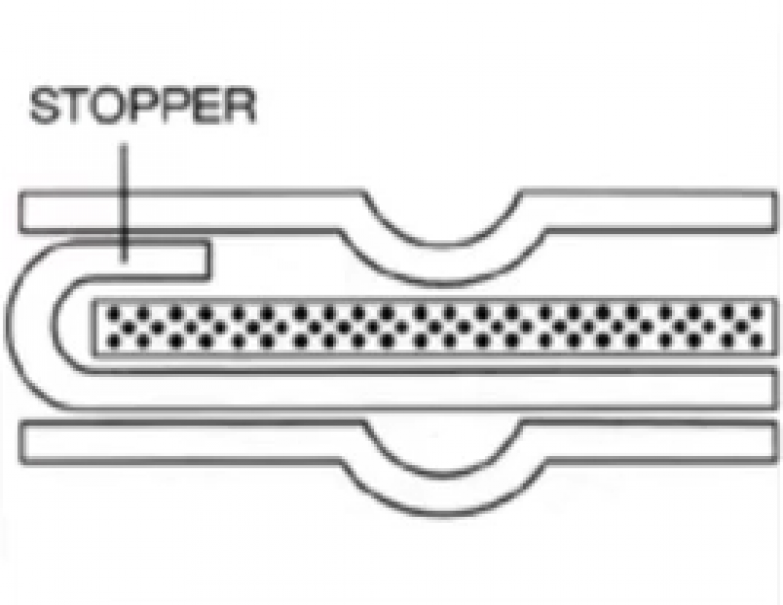
When it comes to MLS gaskets, there are two types, stopper and bead. The stopper is the superior type since as well as the two embossed areas, it also has a part that wraps around the inner layer facing towards the inside diameter of the cylinder bore which when crushed, helps with sealing. The bead type, on the other hand, only relies on the two embossed areas.
MLS gaskets are probably the most popular choice for low end through to moderately high powered engines as they provide a good balance between cost and the ability to create a good seal.
Copper Gaskets
If an MLS gasket won’t support your power aims, the next option is a copper gasket which is used at the top levels of motorsport in engines that may be making in excess of 10,000 horsepower. It is not just a case of taking a machined piece of copper, placing it on top of the block and torquing down your head, however. While the copper on its own is very strong, it has no elasticity so this needs to be used in conjunction with an o-ring which deforms the copper out into a receiver groove as shown above. The protrusion should be about 25% of the diameter of the wire you’re using while the receiver groove should only be 75% of the protrusion, i.e. if your protrusion is 10 thou, you would set the receiver groove to 7.5 thou deep. To enable the protrusion to fit, the receiver groove will be set to 150% the width of the wire so that the gasket can deform and be pushed outwards to lock it into that groove. As you can imagine, this requires some incredibly precise, not to mention costly machining. This isn’t only the case when you first build your engine, but also every time the cylinder head or block surface is machined.
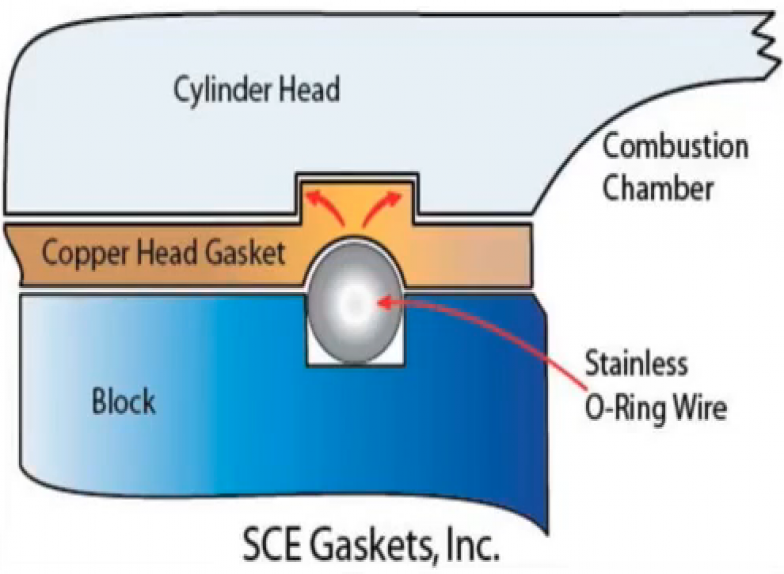
Copper gaskets do a great job of sealing combustion gases, however, they do a very poor job of sealing fluids in the block which is why they are best suited to top end drag racing where the blocks have no coolant in them and fluid leaks are less likely. SCE do make a copper gasket with embossed sections of sealant around the oil and water jackets to enable a more reliable seal against fluid leakage.
Head Studs or Head Bolts
Equally as important as your chosen cylinder head sealing technique is the way you are fastening your cylinder head down onto the block. In a factory application, bolts are almost always used but when you start to add power to your engine, you will most likely move to an aftermarket stud kit in order to improve the clamping force that holds the head to the block but not all of these are created equal. ARP, for example, offer ARP 2000 as well as the superior custom age 625 material. Another option is to simply increase the size of your studs by drilling out the holes in the engine block and head but this does need to be approached with care and is best left to your engine machinist.
You do need to bear in mind the strength of your engine block when upgrading your studs or bolts as it is possible with the extra torque that the upgraded studs provide, that this will end up distorting your engine block around the studs.
Use of O-Rings with an MLS Gasket
MLS gaskets can also be used in conjunction with o-rings by way of having one sit in a machined groove around the outside diameter of the cylinder. The o-ring is distorted and pushed up towards the cylinder head which can improve the seal however if the o-ring is too big, it can have the opposite effect and compromise the seal.
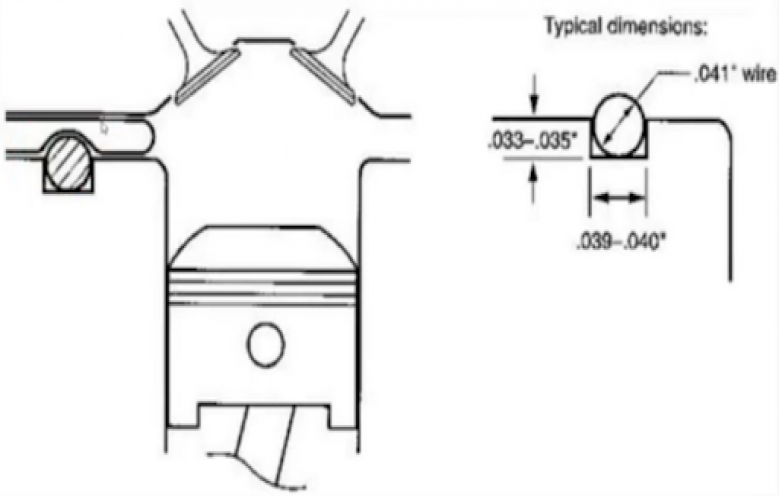
There are a few different types of o-ring you can choose between depending on your application, for example, we have used both copper and stainless steel in the past. Since MLS gaskets don’t have a lot of give, it is important to make sure that your protrusion isn’t too great as this can create fluid and combustion pressure leaks. You also need to make sure that the o-ring applies pressure to the correct part of the gasket.
Gas Filled O-Rings
These were commonly used in the early days of the F1 turbo and turbo touring car eras in the late ‘80s and early ‘90s. They are filled with gas to a pressure in the region of 700-1000 psi, depending on the manufacturer, the idea of which is that as the combustion temperature increases, the gas expands to fill the void created by any flexing of the block. Alternatively, these o-rings can have holes in them that allow combustion gases to enter and force the o-ring to expand this way.
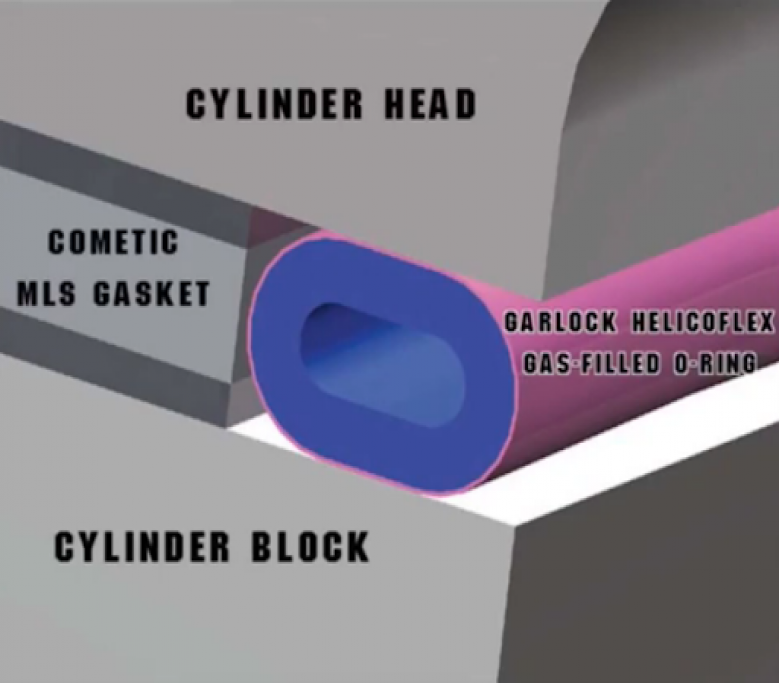
The particular gas filled o-ring shown above is a head gasket solution from Cometic which sits around the outside of the combustion chamber on top of the cylinder sleeve and seals between the top of the cylinder sleeve and the head gasket.
These o-rings have no effect on sealing fluid passages so consequently, these are generally used in conjunction with either a copper gasket or having a sealant applied. Another option is to use them with a modified MLS gasket that has been machined to clear the o-ring however as this usually needs to be done specifically for your engine, this is quite an expensive option with a long turnaround time.
W-Ring
These are referred to by many different names but here, we will call them w-rings. They aren’t used that often nowadays but again, were popular in the F1 turbo and turbo touring car eras in the late ‘80s and early ‘90s and are used in a similar way as you would an o-ring but are not really an o-ring at all. They are a machined stainless steel ring with two spikes on top of it which press up into the cylinder head when they are located into a machined recess and torqued into place, creating a combustion pressure seal. They are effective but understandably, they do cause damage to the cylinder head surface.
Aluminium Bronze Sealing O-Rings
These are one of the newer solutions compared to the others we have discussed so far however are still well proven in import drag racing, for example, Jett Racing’s billet 4G63 which produces 1900 horsepower at an excess of 95 psi.
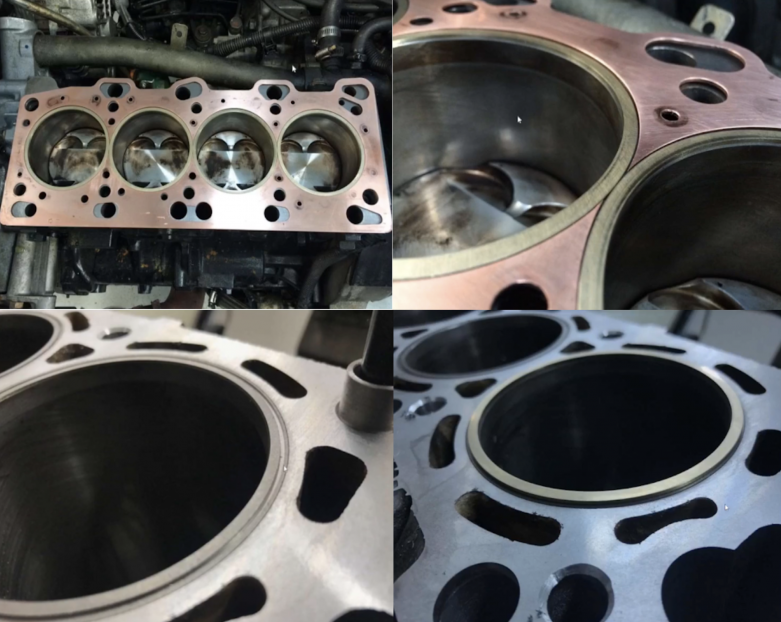
As the name suggests, these are made of an aluminium bronze alloy and are a solid sealing o-ring with a step on the underside that locates in a groove cut into the top of the cylinder bore, used in conjunction with a copper gasket to seal fluids. Not only does the way these o-rings seal mean that they are positively located and can’t move, but it also means that they lock the combustion pressure underneath more securely.
Engine block and cylinder head construction
Choosing the right cylinder head sealing technique for your application is not the end of your job. Often overlooked is the fact that in order to achieve a reliable seal, it is important to consider the construction of the engine block and cylinder head. For example, if you take a high powered engine with a solid billet aluminium block and head, this is obviously less likely to flex and distort than a light factory cast block and head.

Monitoring Head Gasket Seal
As well as choosing the right cylinder head sealing technique, it is also important to know how to monitor your head gasket seal so you know if you have any leaks. Obviously, if you get a head gasket failure like the one shown earlier, you will know about it, but not all leaks will end up in a failure that catastrophic and hopefully you will be able to detect the issue before it gets to that stage.
One option is to fit a pressure sensor to the cooling system which allows you to datalog the pressure and make it easy to tell if any combustion pressure is leaking into the cooling system. Depending on your radiator cap, you should see around 18-22 psi of pressure here which will rapidly rise if your head gasket is leaking. The sensor can be coupled with a driver warning on the dash to alert the driver to back off the throttle and avoid further damage. If you are running a dry engine with no cooling system, this isn’t an option, however at the power levels these engine run, catastrophic failure will occur very quickly anyway.
It is also important to monitor head gasket integrity while you are tuning your engine on the dyno. One of the most common signs that you have a head gasket leak or failure with a turbo/supercharged engine is the engine overheating during and directly after a full power ramp run when it produces enough pressure to create a leak. It is possible that when the car is not being driven on boost, there will be no leakage at all. These symptoms could also be indicative of your cooling system simply not being big enough so you will still have to investigate further but this is still definitely something to look out for. You could even temporarily fit a clear bottle to the end of the overflow tube to make it easier to monitor whether any water is being pushed out during a ramp run. Bear in mind that a small amount is normal but if you see more than about 50 millilitres, you know you have a problem.
When you pull your engine apart, again there are a couple of things to watch out for. The most likely area for a head gasket to fail is between the studs so what you would be looking for is a burnt area on either side of the gasket and also on the engine block and cylinder head. If the gasket has been leaking long enough, you can even end up with the cylinder head going soft, making it junk.
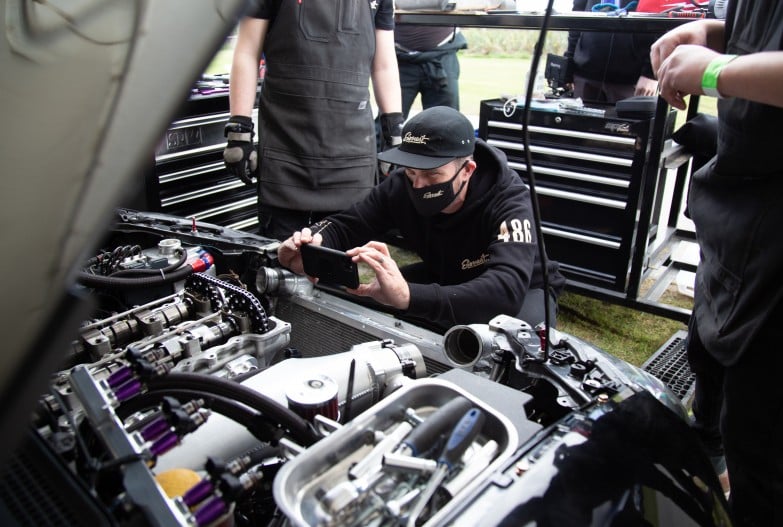
Conclusion
As you can see, while there are a lot of options to choose from when it comes to cylinder head sealing techniques and technology is really starting to narrow down some really solid options that are holding together under cylinder pressures we never, ever thought possible. With a bit of time and research, you can ensure you choose the best method possible that will hopefully live up to the demands your engine puts on it and avoid a costly, catastrophic failure, but also on the flip side not cost you more time and maintenance than you require for your application.
if you want to learn more about performance engine building, check out this free lesson. It's much better than some balding dude with a stutter and a whiteboard talking to you over Zoom like you might expect, we promise!
